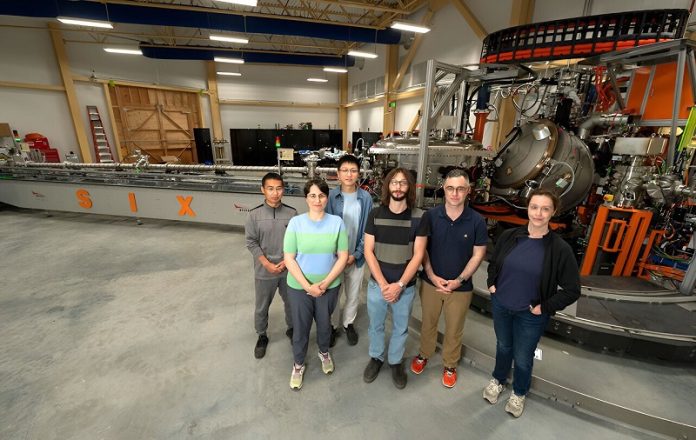
A team of scientists from the U.S. Department of Energy’s Brookhaven National Laboratory has made an exciting discovery about a unique class of materials known as van der Waals magnets.
They’ve uncovered details about the behavior of tiny, particle-like objects called “excitons” in these materials, which could one day lead to new magnetic-based technologies, such as advanced ways to store information.
The research was published in the journal Nature Communications and focused on a specific van der Waals material called nickel phosphorus trisulfide (NiPS3).
This material is a crystalline substance, meaning it has a very ordered structure, like the way atoms are arranged in a diamond.
The team used a powerful tool called the National Synchrotron Light Source II (NSLS-II) at Brookhaven to explore NiPS3 in great detail.
This facility produces extremely bright beams of X-rays, which are used to investigate a wide range of materials, from batteries to biological samples.
So, what exactly is an exciton? An exciton is formed when an electron (a negatively charged particle) is paired with a “hole” (a space in the material that acts like a positively charged particle because it lacks an electron).
These two form a bound unit that can move through the material. Discovering excitons in NiPS3 is a big deal because these excitons might have a strong connection to the material’s magnetic properties.
This opens up the possibility of understanding—and maybe even controlling—excitons using magnetism.
However, until now, scientists had struggled to figure out how these excitons form and move within NiPS3.
To solve this mystery, the research team used a special X-ray technique called resonant inelastic X-ray scattering (RIXS), which is available at NSLS-II’s Soft Inelastic X-ray Scattering (SIX) beamline.
This high-tech experimental station allows scientists to study the electronic properties of solid materials with incredible precision.
Mark Dean, a physicist at Brookhaven and one of the study’s authors, explained that the team was trying to answer two main questions: “What is the fundamental nature of an exciton? How does it interact with magnetism?” With the help of RIXS, they began to find answers.
The team discovered that the formation and movement of excitons in NiPS3 are governed by a physics principle known as Hund’s exchange interaction.
This principle explains how different electron spins (tiny magnetic moments carried by electrons) interact with each other. In the case of NiPS3, Hund’s exchange provides the energy needed for excitons to form.
The researchers also found that excitons move through the crystal in a way that is similar to another type of magnetic disturbance called a “double-magnon.”
Magnons are collective excitations of electron spins within a crystal, adding another layer to the complex relationship between the electronic and magnetic properties of van der Waals magnets.
Wei He, a postdoctoral researcher and the first author of the study, expressed optimism about the future of this research. He believes that as tools like RIXS and electron microscopy continue to improve, scientists will be able to make even more detailed measurements of NiPS3.
This could potentially open up new avenues for using magnetic excitons to create advanced, controllable magnetic information storage systems.



